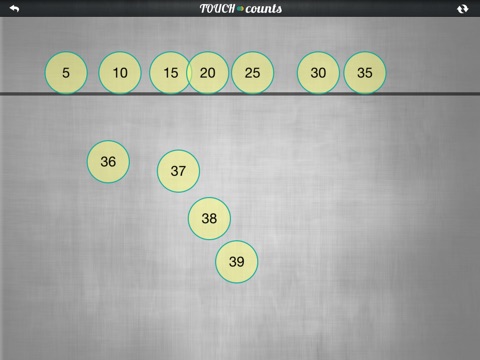
TouchCounts app for iPhone and iPad
Developer: Nathalie Sinclair
First release : 19 Jul 2014
App size: 38.13 Mb
TouchCounts lets children use their fingers, eyes and ears to learn to count, add and subtract. By tapping and swiping and by using specially-designed gestures for adding and subtracting, children create and manipulate their own numbers, developing a stronger number sense as they explore the mathematical foundations of ordinality, cardinality, and arithmetic.
As children begin to learn how to count with their fingers, TouchCounts is the perfect environment to solidify that learning and help them generalize beyond their fingers, “going past ten” into the endless world of larger values. TouchCounts allows children to focus on both ordered and operational views of numbers, inviting them to develop their number sense by creating and exploring coordinated number sequences tactilely, visually, symbolically and verbally. In addition, learners can explore how numeric quantities can be composed from–and decomposed into–other, smaller quantities.
Neither a repetitive drill-and-practice worksheet nor an rigid "level-driven" game, TouchCounts is a mathematics exploration environment designed to allow students to discover, pose and examine their own questions and understandings. Sample activities on the TouchCounts website show parents and teachers how TouchCounts can support learners conceptual understanding of:
- number naming
- counting and skip-counting
- ordinality and cardinality
- even and odd numbers
- less-than, greater-than and equal-to relationships
- subitization
- addition, subtraction, and the foundations of division and multiplication.
Based on contemporary research understandings of how children learn mathematics, and developed by the Tangible Mathematics Learning Project in the Faculty of Education at Simon Fraser University, TouchCounts is intended for use in school, pre-school and at home; and with small groups, with 1:1 pairings of a learner and a parent or teacher, or individually.



